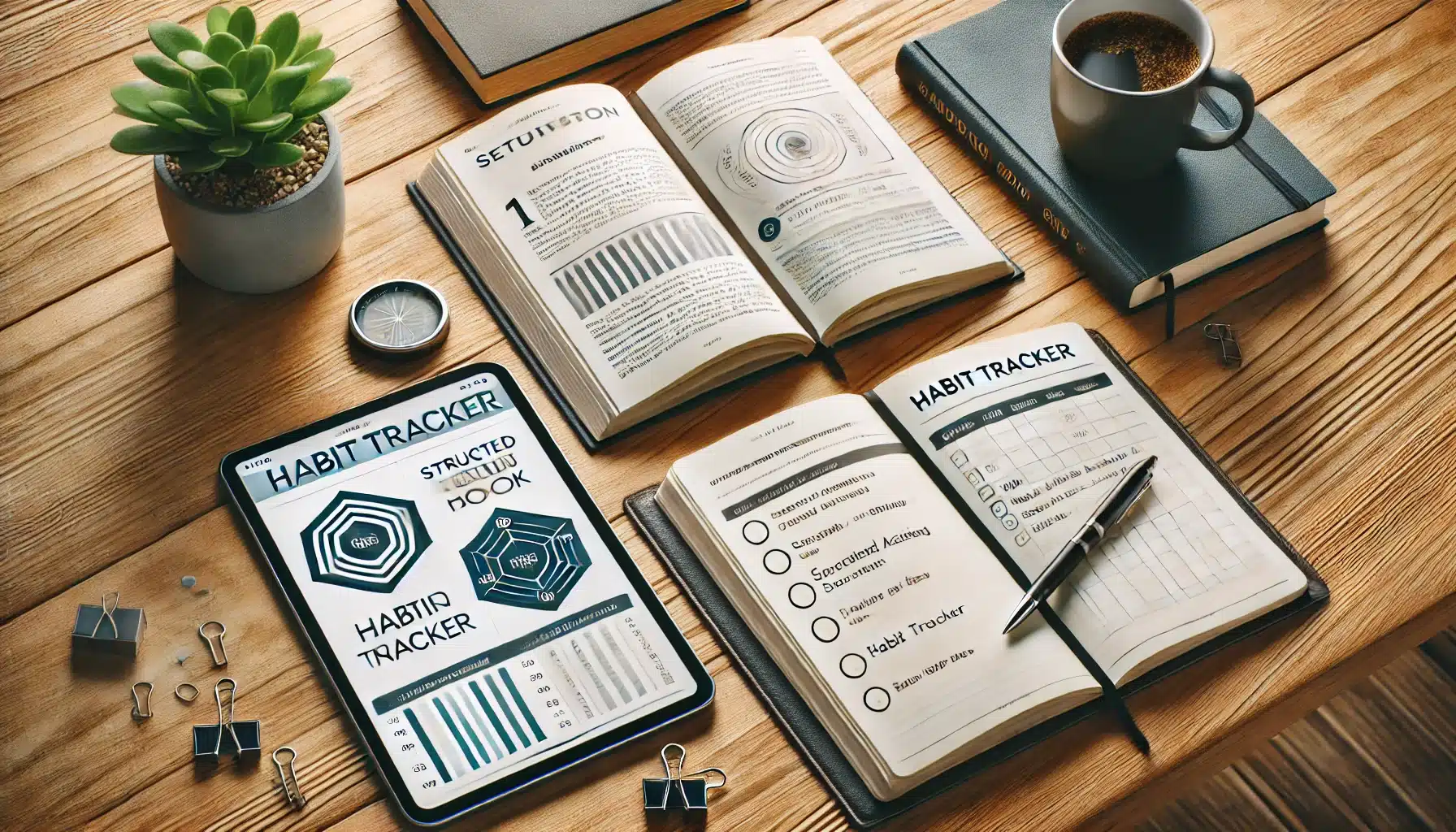Self-help books can be life-changing, but only if you apply what you learn. Many people read book after book but never see real improvements because they get stuck in the “reading loop”—consuming knowledge without taking action.
The key to making self-help books work is moving from theory to execution. Instead of passively reading, you must extract key lessons, develop action plans, and implement changes in daily life.
This article provides a step-by-step method to ensure that self-help books lead to real personal growth and transformation.
Why Most People Fail to Apply Self-Help Book Lessons
1. Reading Feels Productive but Doesn’t Create Change
Many people read self-help books for motivation, but motivation fades without action.
📌 Example: Reading Atomic Habits is inspiring, but unless you actively build new habits, nothing changes.
Why it works: Transformation happens when ideas turn into actions, not just inspiration.
2. Too Much Information, No Execution
Self-help books often contain too many principles, making it difficult to know where to start.
📌 Example: The 7 Habits of Highly Effective People is full of great concepts, but trying to implement all seven at once leads to overwhelm and inaction.
Why it works: Focusing on one key lesson at a time ensures sustainable change.
3. Lack of a System for Retaining and Applying Knowledge
Without a strategy for organizing, reviewing, and applying book insights, most lessons are forgotten.
📌 Example: People highlight important passages but never revisit them, losing valuable knowledge over time.
Why it works: A structured system reinforces lessons and ensures practical application.
How to Read Self-Help Books for Maximum Impact
Step 1: Set a Clear Purpose for Each Book
Before starting a self-help book, define your objective:
✅ Why am I reading this book?
✅ What specific problem do I want to solve?
✅ How will I apply what I learn?
📌 Example: Instead of reading The 5 AM Club just for motivation, set a goal: “Create a productive morning routine within 30 days.”
Why it works: A clear goal keeps reading focused and action-oriented.
Step 2: Take Notes in an Action-Based Format
Instead of just highlighting quotes, structure your notes for application:
📌 Action-Based Note-Taking Format:
1️⃣ Key Insight – Summarize the core idea in one sentence.
2️⃣ Why It Matters – Explain its relevance to your life.
3️⃣ First Action Step – Identify one thing you can implement immediately.
📌 Example: From Essentialism:
- Key Insight: Focus only on what truly matters.
- Why It Matters: I take on too many commitments and feel overwhelmed.
- First Action Step: Start saying “no” to non-essential tasks this week.
Why it works: Structured note-taking bridges the gap between knowledge and action.
Step 3: Apply One Lesson at a Time
Avoid the mistake of trying to implement everything at once. Instead:
✅ Pick one key lesson from the book.
✅ Focus on applying it for 7-14 days before moving to the next lesson.
✅ Track progress and adjust based on real-world experience.
📌 Example: If reading Atomic Habits, start with habit stacking—linking a new habit to an existing one (e.g., meditating after brushing your teeth).
Why it works: Gradual application ensures sustainable change and prevents burnout.
Step 4: Review and Reinforce Key Lessons
Self-help books lose their impact if you forget what you’ve read.
✅ Weekly review: Revisit key takeaways and check progress.
✅ Monthly reflection: Identify which lessons had the biggest impact.
✅ Annual summary: Review all books read and extract the most valuable insights.
📌 Example: Create a “Lessons in Action” Journal to track progress on applied book insights.
Why it works: Spaced repetition reinforces memory and makes lessons stick.
Step 5: Teach and Share What You Learn
Explaining concepts to others deepens understanding and increases accountability.
✅ Discuss book lessons in a mastermind group or online community.
✅ Write a short summary of a book’s key lessons and share it.
✅ Teach a friend or coworker one actionable idea.
📌 Example: After reading The 4-Hour Workweek, teach a friend about automation and delegation.
Why it works: Teaching forces you to clarify and internalize knowledge.
Step 6: Measure Real-World Results
Track whether the lessons from self-help books are actually improving your life.
✅ Set clear metrics for success (e.g., improved focus, better finances, increased confidence).
✅ Track progress using a habit tracker or goal planner.
✅ Adjust strategies based on what works and what doesn’t.
📌 Example: If applying Deep Work, track how many distraction-free work hours you complete each week.
Why it works: Measuring results ensures accountability and continuous improvement.
Common Mistakes to Avoid When Reading Self-Help Books
❌ Reading Too Many Books Without Applying Anything – Focus on depth, not quantity.
❌ Trying to Implement Every Idea at Once – Apply one key lesson at a time.
❌ Not Tracking Progress – Use a journal or tracking system.
❌ Over-Relying on Motivation – Success comes from consistent action, not temporary inspiration.
Final Thoughts: Turn Self-Help Books into Real-Life Transformation
Self-help books can be powerful tools for growth, but only if you move beyond theory and apply their lessons.
To maximize impact:
✅ Set a clear purpose before reading.
✅ Take structured, action-oriented notes.
✅ Apply one key lesson at a time.
✅ Review and reinforce knowledge regularly.
✅ Teach what you learn to others.
✅ Measure real-world improvements in your life.
By following this system, you’ll turn self-help books from temporary motivation into lasting transformation.

